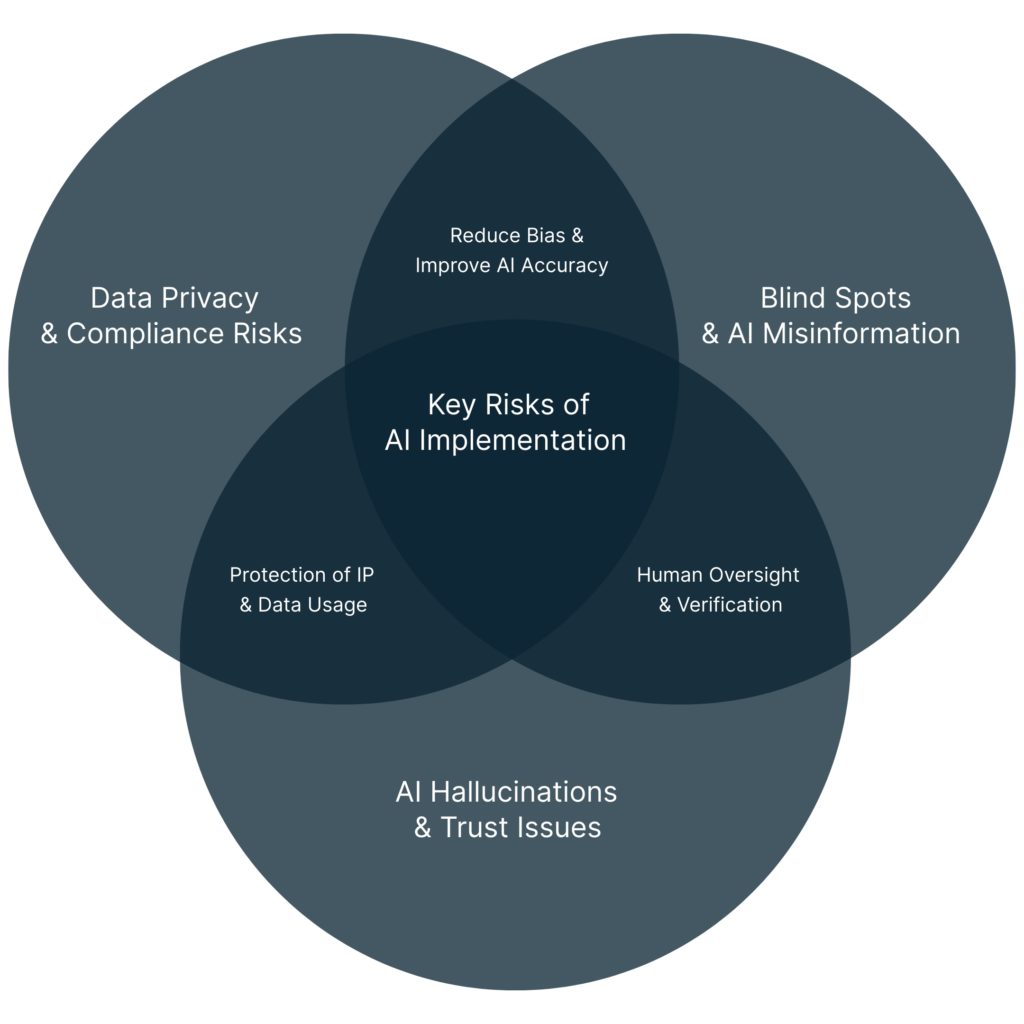RISK LEADER’S GUIDE TO
Harnessing AI for Smarter Risk Management
Risk management is becoming more complex, with security teams facing an increasing volume of data, evolving geopolitical risks, and cyber threats. Artificial Intelligence (AI) is reshaping the industry, offering real-time intelligence processing, predictive analytics, and automation to help organisations make faster, more informed decisions.

The ability to process vast amounts of structured and unstructured data, generate insights in real time, and automate key risk workflows is revolutionising how risk leaders assess and respond to emerging threats.
Leon Storey, Head of AI // Solace Global
How Can AI Improve Risk Intelligence and Decision-Making?
Security and risk management teams process vast amounts of information daily – from open-source intelligence and news feeds to internal reports and real-time alerts. However, filtering through this data to identify real threats can be time-consuming and resource-intensive. AI-powered risk intelligence can automate this process, helping organisations cut through the noise and focus on what matters most.
Here’s how AI enhances risk intelligence and decision-making:
✔ Filtering Through High Volumes of Data – AI sifts through large datasets, extracting relevant risk signals while eliminating unnecessary noise, helping teams focus on critical threats.
✔ Providing Predictive Insights – By analysing historical patterns and real-time data, AI can anticipate potential risks before they escalate, enabling a proactive approach to security.
✔ Standardising Risk Assessments – AI ensures consistency in reporting and risk analysis, reducing human error and improving the reliability of intelligence across teams.
✔ Automating Threat Alerts and Reports – AI-powered automation delivers real-time alerts and generates intelligence reports, ensuring key stakeholders receive the most relevant updates without delay.
✔ Enhancing Decision-Making Under Pressure – With AI-driven insights, security teams can make informed, data-backed decisions faster, improving response times during crises.
By integrating AI into risk management, organisations can improve efficiency, accuracy, and overall preparedness in an increasingly complex threat landscape.

Key Risk of AI Implementation in Risk Management
Is AI the Future of Risk Management?
Traditional risk management relies on manual data analysis, human intuition, and time-consuming processes. But in an era of fast-changing global threats, organisations need smarter, faster solutions. AI is transforming risk management by providing real-time intelligence, predictive analytics, and automated decision support.
With AI, businesses can detect threats earlier, respond faster, and improve crisis management strategies – all while reducing the workload for security teams. However, AI is not a replacement for expertise; rather, it enhances human decision-making, making risk management more efficient, data-driven, and proactive.
